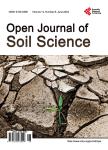Sediment Delivery by the Yukon River to the Yukon Flats, Yukon Delta and the Bering Sea
Sediment Delivery by the Yukon River to the Yukon Flats, Yukon Delta and the Bering Sea作者机构:Department of Natural Resources College of Agricultural Consumer and Environmental Sciences University of Illinois Urbana Illinois USA Department of Crop Sciences College of Agriculture Consumer and Environmental Sciences University of Illinois Urbana Illinois USA
出 版 物:《Open Journal of Soil Science》 (土壤科学期刊(英文))
年 卷 期:2020年第10卷第9期
页 面:410-442页
主 题:Denali Alaska British Columbia Yukon Territory Alyeska Pipeline Alaska Highway Gas and Oil Exploration Trans-Alaska Pipeline
摘 要:The physical, chemical and biological attributes of the Yukon River and tributary basins impact soil erosion, sediment transport and sediment delivery. The glacier, snow and permafrost melting, runoff, erosion, transport, deposition and storage of gravelly, sandy, silty and clayey sediments determine the habitat distribution and water quality within the river channels and floodplains. The ecological functioning, with food and nutrient delivery, migratory cues, breeding, habitats, and riparian and floodplain ecological cycles are all dependent on the transported sediment at specific times of the year. Annual temperatures have been rising since the 1840s which could contribute to higher runoff water flows and greater sedimentation. The primary objective was to document the sedimentation in the Yukon watershed with little soil erosion as a result of agriculture or urban development. The causes of the soil erosion and sedimentation were permafrost, alpine glacial melting, drilling for gas and oil, road construction, gold mining, cold war military sites, pipeline construction, forest fires and steep slopes.



